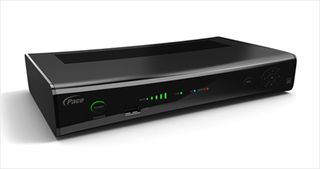Set-Top Box Shipments to Reach 269 Million This Year: IHS

Consumers may be watching more video on computers, smartphones and tablets, but the demand for the more traditional delivery mechanism for pay TV will not diminish in the short- or mid-term.
According to the latest “IHS Set-Top Box Market Monitor” report, global shipments of set-top boxes used for cable, satellite, terrestrial and Internet protocol television digital TV services will increase 8% to 269 million units this year, up from 250 million units in 2012. STB industry revenue will reach a record $22.2 billion in 2013, according to IHS.
From there, IHS forecasts that STB shipments will grow 6% to 286 million in 2014 and edge up another 1% to 290 million in 2015, before receding to 276 million and 271 million in 2016 and 2017, respectively.
Although the proliferation of multiscreen devices will eventually result in a slowdown for STBs, they will help fuel growth over the next few years. IHS believes that the STB sector will benefit from pay-TV operators looking to stave off the incursion of over-the-top providers like Netflix and Amazon, as they focus on video delivery via multimedia home gateways to screens beyond the television.
Moreover, the ongoing migration to the high-definition format will also contribute to STB advances, with 2014 expected to be the first year when more than half of pay-TV boxes shipped globally will support HD. Further out, the rollout of ultra high-definition (4K) services should provide a lift for the STB community.
“STBs are facing a mounting challenge to their role at the dominant pay TV video consumption device because of operators’ growing emphasis on supporting multiscreen devices,” said Daniel Simmons, senior principal analyst for TV technology at IHS. “However, operators are continuing to deploy STBs in order to manage the compatibility between their delivery networks and the consumer electronics devices that consumers are increasingly using to view content now. As pay-TV operators rush to accommodate changes in delivery platforms and in video formats—including the adoption of high definition—STB shipments will continue to rise, hitting record levels for the next few years.
In less mature markets like India, STB volume growth will be driven by demand for more basic models. Shipments also will be propelled by terrestrial TV digitization in Central and Eastern Europe as well as South and Central America.
Multichannel Newsletter
The smarter way to stay on top of the multichannel video marketplace. Sign up below.
After hitting a record high in 2015, global STB shipments are expected to start to decline, receding 5% in 2016 and another 2% the following year.
“The global transition from analog to digital TV will be almost complete by 2016, leading to a contraction in the overall number of STBs shipped,” Simmons said. “As this deadline approaches, the best-positioned vendors will be those that have developed the most technologically advanced STBs that will allow them to drive value in the developed markets, as well as those that can extract maximum margin from the emerging markets.”
Relative to share, the United Kingdom’s Pace remained in the top spot, accounting for 11.3% of all pay-TV STB unit shipments in 2012. French manufacturer Technicolor increased its shipments by almost 5 million units in 2012, to leapfrog Motorola into second place.
Growth in shipments was also a key driver in Cisco’s 2013 success, which saw it become the largest pay-TV STB vendor in terms of revenue. However, the now-consolidated STB businesses Arris and Motorola yielded combined pay-TV STB revenue that was larger than Cisco’s in 2012, according to IHS.
